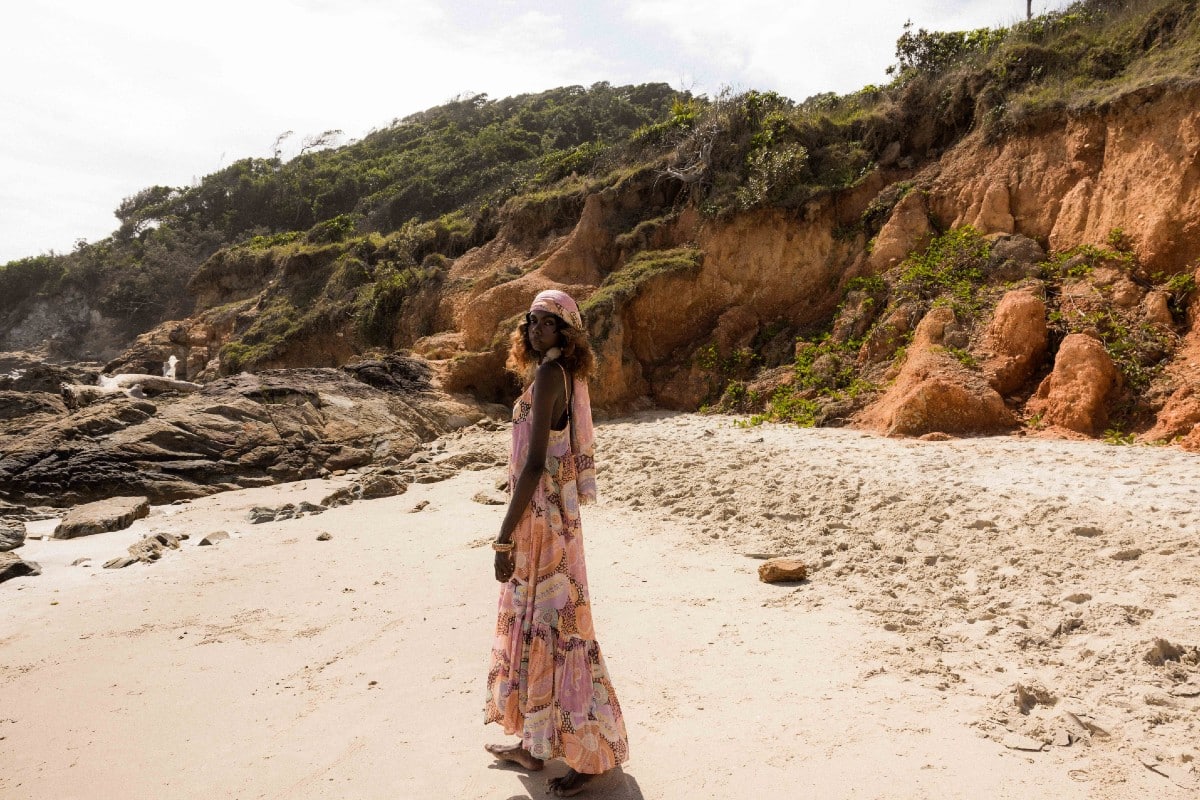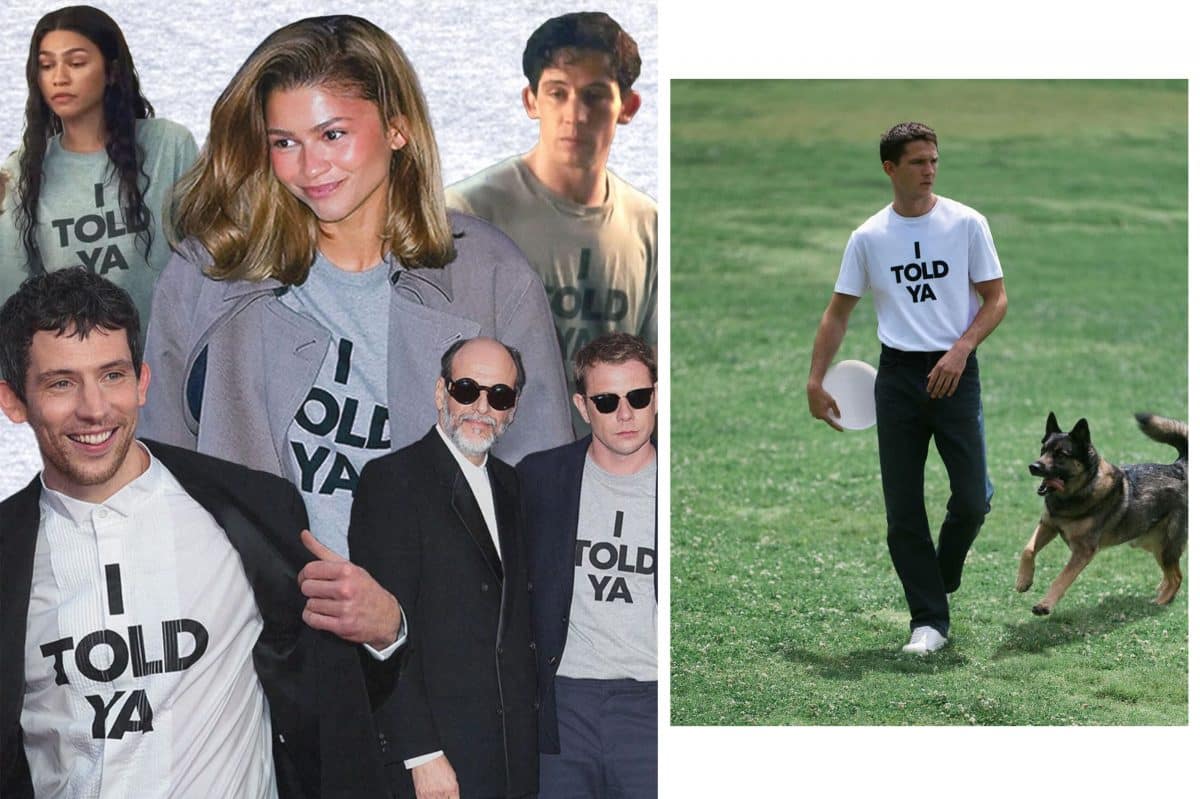
In fashion, collaborating with artists is always a multilayered process, but when the artist is a member of a marginalised community, more thought is required. How can you ensure the partnership is one of equal footing, grounded in appreciation and respect? The short answer is that it’s not easy, and you need to be willing to put in the work.
When iconic Australian fashion designer, Spell reached out to First Nations artist Kylie Caldwell to collaborate, it gave way to a deeper dialogue. What started as a meeting of kindred creators - a connection between two creative minds - turned into a blueprint for the future.
After collaborating on a seven-piece, limited-edition collection based on Caldwell’s vibrant artworks, both parties saw an opportunity to share their journey and offer a guide for others looking to collaborate in good faith. In the spirit of transparency and sharing, they chose to offer up their process as an open-sourced, step-by-step resource. It’s one that can be used by any brand looking to collaborate with a First Nations artist.
For any brand wondering where to start, the practical how-to guide to ethical collaboration is available in full detail, but below find the key points.
Meaningful commitment comes first
Before embarking on a collaboration, Spell and Kylie’s guide notes that any “meaningful First Nations collaboration needs to be matched with organisational commitment first.”
Spell co-founder Elizabeth Abegg believes that the hardest part was to “trust that we had done enough work on our Reconciliation Action Plan to approach the collaboration with awareness.”
For Spell, it was through this work that the initial connection to Kylie Caldwell was formed. It’s why doing the work and having a strong commitment to action as a business is so critical as a first step.
Face-to-face meetings
An artistic collaboration should feel organic. Face-to-face meetings and a shared passion for designs are pertinent to creating something that feels authentic to both parties. Forming a relationship first is always beneficial. Try to meet and connect several times and then discuss how a collaboration could work.
Engage consultants
Opening a wider conversation around diversity and inclusion is another critical step.
Spell chose to engage three First Nations consultants on meaningful engagement with First Nations individuals and organisations - including Yatu Widders-Hunt, a board member for the Australian Fashion Council. She’s previously spoken about what the future of fashion needs to look like and how sustainable fashion could require a return to the way things have always been for Indigenous designers.
In fact, it was this part of the process that convinced Spell to make this guide altogether. “The blueprint was an idea of one of our Cultural Consultants,” said Abegg.
“She prompted us to reframe this thinking and ask how the collaboration had been for Kylie and what she had learnt. We worked closely on the blueprint with Kylie in the hope that creating more transparency around the process might increase the economic opportunities for First Nations creatives who are significantly underrepresented in our industry.”
Develop your contract
This is the recommended step where you can begin contractual negotiations. This includes looking at the licensing of the artwork and subsequent fee structure or commission of sales.
Contractual negotiations are often wordy and mentally taxing, so it’s important they’re handled correctly. When commissioning bespoke artwork, it is often the party who purchase the works that retain the intellectual property. But this is not always the best path forward for a partnership of this nature. It’s why Spell chose to again engage a First Nations expert when delving into this area.
Similarly, Caldwell connected with Arts Law, a legal centre for the arts to gauge advice on the best way forward for her and the partnership.
Design and involvement
Now that the nitty gritty is out of the way, you’re ready to start on design. The key takeaway for Spell here: involve the artist in all steps of the process. This will keep everything as authentic as possible.
It’s especially important to remember that multidisciplinary creatives often don’t observe a typical 9-5 working schedule. The design process needs to be flexible enough to allow true creativity to shine through.
Make the artist central to all communications
The loudest voice should be the artist’s voice. They should be the central point of any marketing or talk of the collaboration. Here, Spell noted there was some “unlearning” of the innate communications strategy of ‘brand-centering’ that needed to be done.
Also, engaging a First Nations communications agency is helpful.
The main points to remember are: centre the artist; elevate the artist’s voice and profile; ensure the artist was involved in the communications (reviewing and providing feedback); and to highlight the process of this collaboration as being just as important as the creative product.
Engage a First Nations creative team
It’s been mentioned throughout, but when seeking consultants, agencies, models, photographers or other creatives, try to engage a team of First Nations people where possible.
This offers a chance to forge new relationships, make business connections outside your usual circle and expand opportunities within the First Nations community. Ensure you’re involving the artist in this part of the process and allowing them equal choice in building the marketing team.
Don’t be afraid to get it wrong
Part of being human is understanding that none of us are perfect. Don’t let the fear of imperfection inhibit you from trying! As for Spell, co-founder Abegg said “knowing that we were going to make mistakes and not do it perfectly was one of the hardest parts.”
It’s important to keep an open mind, be ready to make changes and also be open to accepting accountability when embarking on a creative process like this. Understand that any learning experience involves just that - learning!
By sharing this information, Spell hopes it may increase the economic opportunities for First Nations artists, designers and other creatives who are significantly underrepresented at all levels of the fashion industry.
To read the step-by-step guide with notes from First Nations multidisciplinary artist Kylie Caldwell, head to Spell’s open-sourced blueprint.



